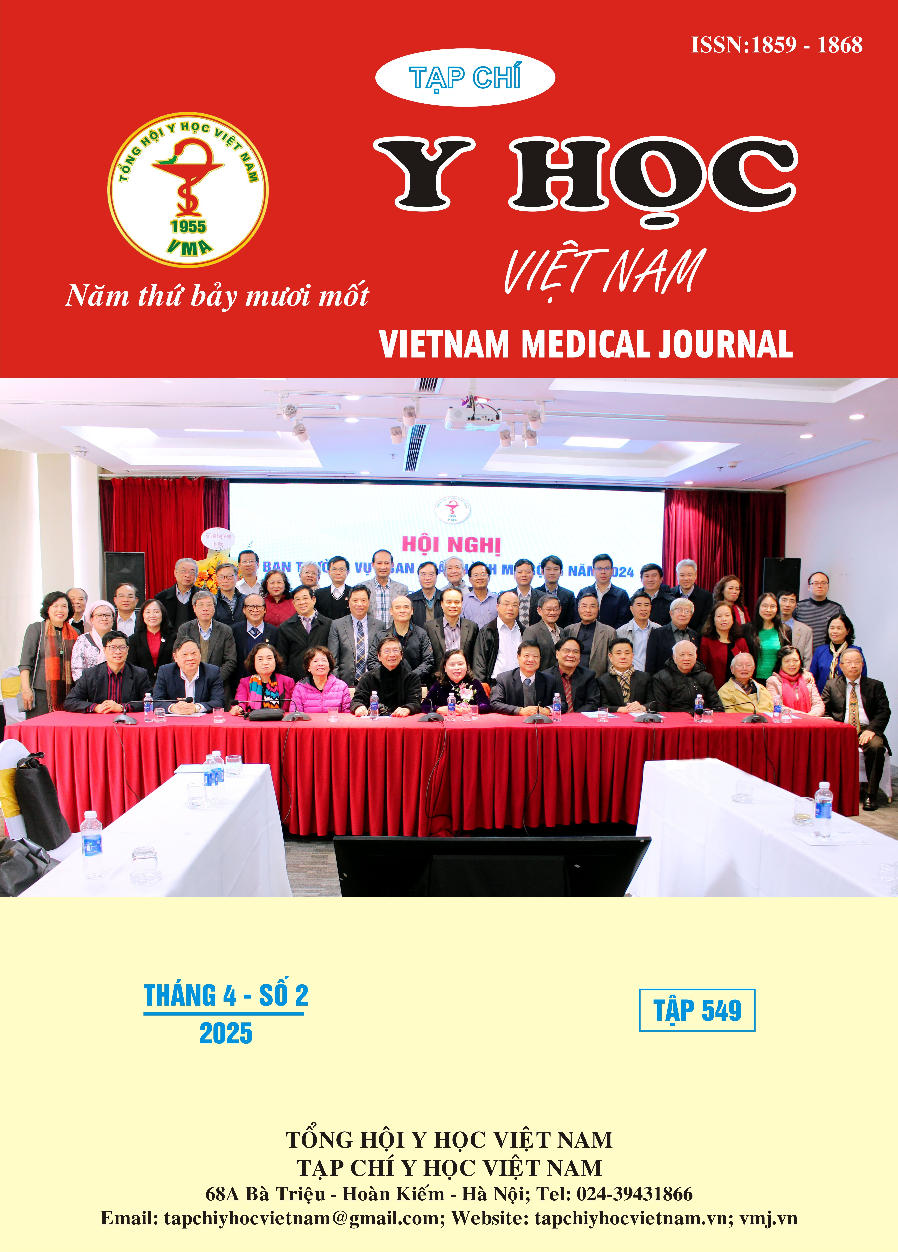SEVERE DENGUE HEMORRHAGIC FEVER WITH SEVERE LIVER INJURY: CLINICAL, LABORATORY FINDINGS AND TREATMENT WITH N-ACETYLCYSTEINE
Main Article Content
Abstract
Objectives: To describe the clinical and paraclinical progression and treatment outcomes of adult patients with severe dengue hemorrhagic fever (DHF) and severe liver damage with and without N-acetylcysteine (NAC) treatment. Methods: A descriptive case series study was conducted on patients aged 16 and older diagnosed with severe liver injury caused by severe DHF, who were hospitalized at the Hospital for Tropical Diseases from August 2022 to March 2024. Results: 178 adult patients with severe DHF and severe liver injury were included. Of the 43 patients indicated for NAC, 24 were treated with NAC and 19 were not. Patients treated with NAC had a median age of 39 years (IQR: 31 – 47), compared to a median age of 31.5 years (IQR: 23 – 40) in the untreated group. The rate of jaundice was 70.8% in the NAC group compared to 14.3% in the untreated group. Bleeding and hepatomegaly in the NAC group were 62.5% and 62.5%, respectively, p < 0.01 difference compared to the untreated group. The median AST in the NAC group at study entry was 3806 U/L (IQR 1809 – 8165) and decreased more rapidly than ALT after day 7 and recovered completely after 2 weeks of illness onset. There was a significant difference between the two groups with p < 0.01 in many important aspects such as blood filtration, respiratory support, and prevention of hepatic coma. The mortality rate in the study was 10 patients in the untreated NAC group and 2 patients in the NAC group, all of whom had hepatic encephalopathy and INR ≥1.5. Conclusions: NAC should be considered an important treatment option for adult patients with severe DHF and severe liver damage according to the Ministry of Health’s guidelines, especially for those with accompanying symptoms, such as plasma leakage shock, jaundice, and hemorrhage.
Article Details
Keywords
Dengue hemorrhagic fever, severe liver injury
References
2. Bộ Y tế. Quyết định số 3705/QĐ-BYT. Hướng dẫn chẩn đoán, điều trị Sốt xuất huyết Dengue. 2019.
3. Nguyễn Phương Hải. Khảo sát các dấu ấn sinh học mới của tổn thương gan ở bệnh nhân sốt xuất huyết Dengue người lớn tại bệnh viện Bệnh Nhiệt đới. Luận văn thạc sĩ. Đại học Y Dược TP.HCM; 2017
4. Nguyễn Thị Kim Ngân. Biến đổi cả Ferritin, NT-PROANP, NT-PROBNP và NGAL ở bệnh nhân sốt xuất huyết Dengue nặng tại bệnh viện Bệnh Nhiệt đới. Luận văn Bác sĩ Nội trú. Đại học Y Dược TP.HCM; 2023.
5. Dissanayake Dmdib, Gunaratne Wmsn, et al. Use of intravenous N-acetylcysteine in acute severe hepatitis due to severe dengue infection: a case series. BMC Infect Dis. Sep 20 2021; 21(1):978. doi:10.1186/s12879-021-06681-9
6. Gupta Bal Kishan, Nehara Hardeva Ram, et al. Acute abdomen presentation in dengue fever during recent outbreak. Journal of Acute Disease. 2017;6(5):198-204
7. Ling L. M., Wilder-Smith A., Leo Y. S, et al. Fulminant hepatitis in dengue haemorrhagic fever. J Clin Virol. Mar 2007;38(3):265-8. doi:10.1016/j.jcv.2006.12.011
8. Sreekanth G. P., Panaampon J., Suttitheptumrong A., et al. Drug repurposing of N-acetyl cysteine as antiviral against dengue virus infection. Antiviral Res. Jun2019;166:42-55. doi:10.1016/j.antiviral.2019.03.011


